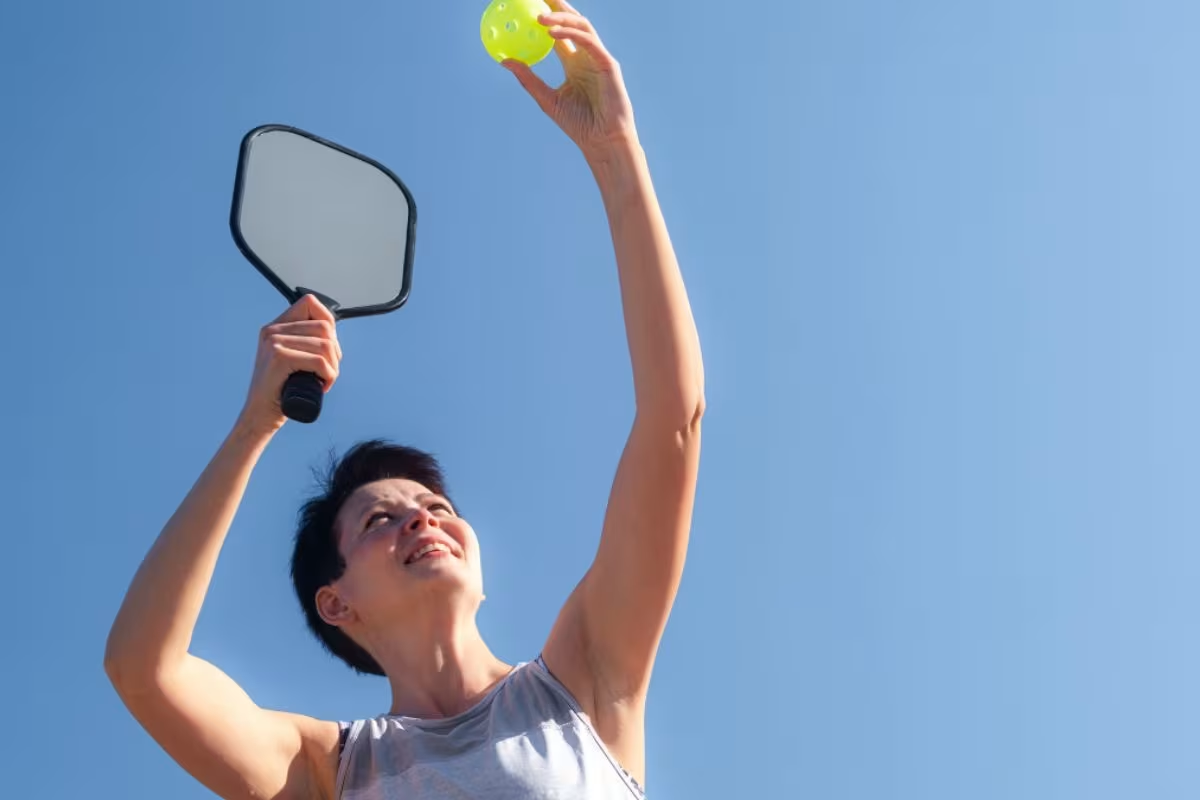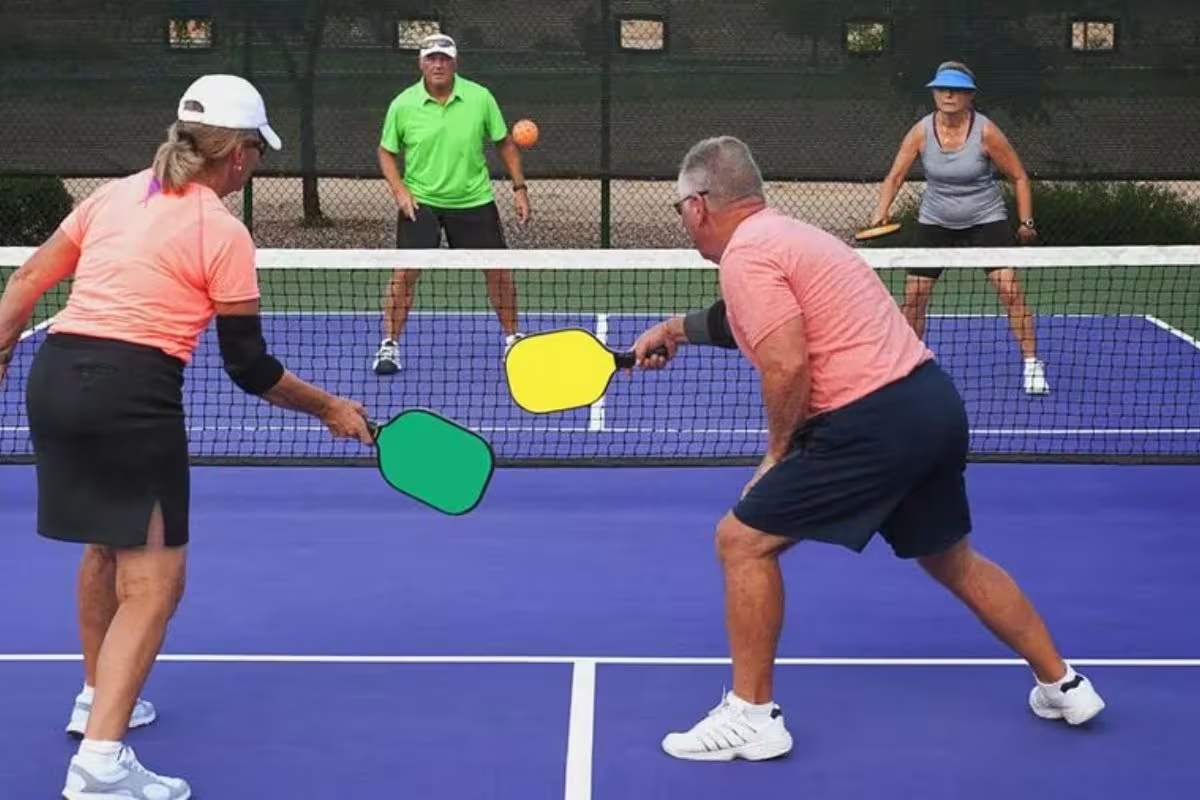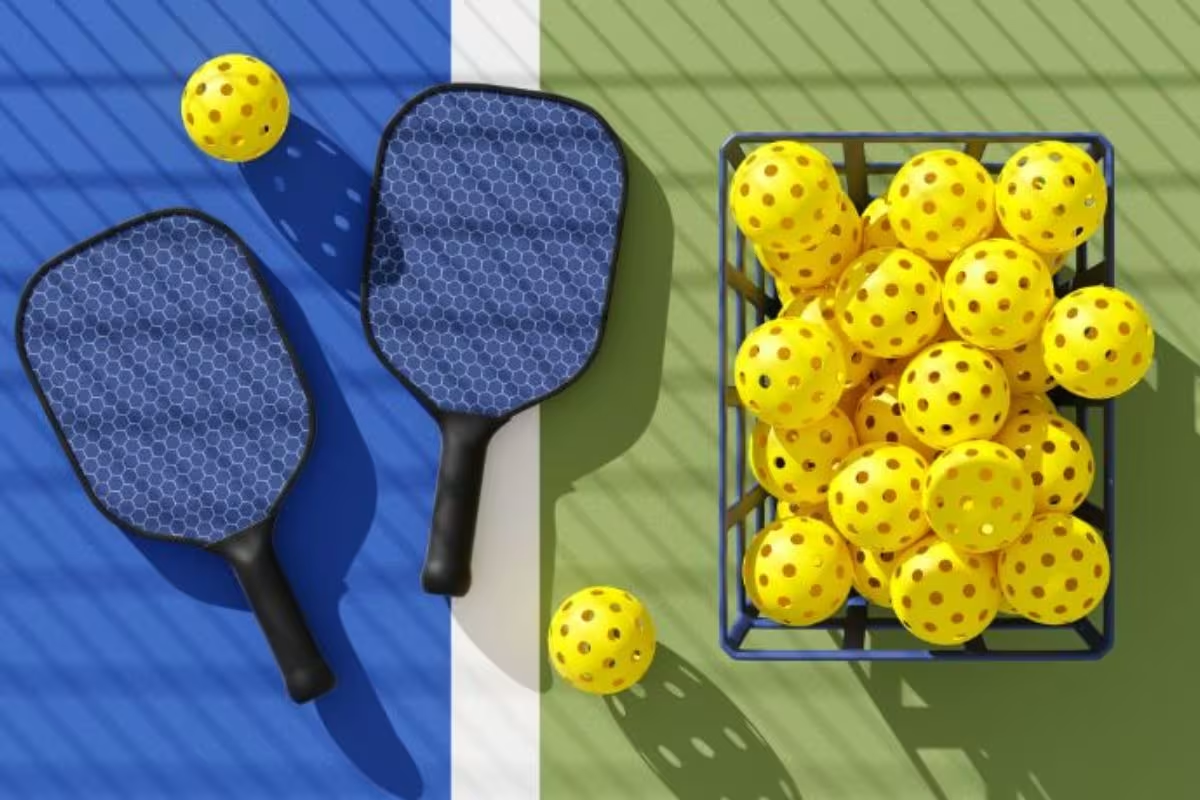Understanding Pickleball Rules: Pickleball has surged in popularity over recent years, captivating players of all ages and skill levels. With its unique blend of tennis, badminton, and ping-pong, understanding the basic rules is essential for newcomers. This guide will break down the fundamental pickleball rules and provide insights on how to play pickleball effectively, especially for beginners.
The Pickleball Court Dimensions and Layout
A pickleball court is 20 feet wide and 44 feet long for singles and doubles play. The net height is 36 inches at the sidelines and 34 inches in the middle. The court is divided into two halves by the net, with a non-volley zone (or “kitchen”) that extends 7 feet from the net on both sides.
Serving in Pickleball
How to Serve:
The serve must be executed underhand, with the paddle contacting the ball below the waist. The server must stand behind the baseline, and the ball must be hit diagonally to the opponent’s service area. The serve must clear the non-volley zone.
Two Serve Attempts:
If the server fails to make a legal serve on the first attempt (the ball hits the net or goes out of bounds), they are allowed one re-serve. If the second serve also fails, it results in a fault, and the serve passes to the opposing team.
The Non-Volley Zone in Pickleball (Kitchen)
What is the Kitchen?
The non-volley zone is a 7-foot area on either side of the net. Pickleball players cannot hit the ball while standing in this zone if the ball is in the air. Players can enter the zone to play a ball that has bounced but must exit before hitting a volley.
Purpose of the Rule:
The rule prevents players from executing aggressive smashes right at the net, promoting more strategic gameplay and rallies.
The Double Bounce Rule in Pickleball
Explanation of the Rule:
After the serve, both teams must let the ball bounce once on their side before hitting it back. This means that the receiving team must allow the serve to bounce, and the serving team must allow the return shot to bounce before they can hit it again. After this, players can choose to volley (hit it before it bounces) or play it off the bounce.
Scoring System in Pickleball
Point Structure:
Pickleball uses a rally scoring system, meaning a point is scored on every serve, regardless of which team served. Games are typically played to 11 points, and a player must win by a margin of at least 2 points. Pickleball tournaments may use different scoring methods, such as playing to 15 or 21 points.
Faults in Pickleball
Definition of a Fault:
A fault occurs when a player fails to execute a legal play. Common faults include:
- The ball goes out of bounds.
- The ball does not clear the net.
- A player hits the ball while standing in the non-volley zone.
- A player steps on or over the baseline while serving.
- A player violates the double bounce rule.
When a fault is committed, the opposing team receives the serve or point.
Let Serves in Pickleball
What is a Let Serve?
If the served ball hits the net but still goes over into the correct service area, it is called a let serve. A let serve is considered a good serve, and the point is replayed without penalty.
Player Positioning on Pickleball Court
Doubles Positioning:
In doubles play, each team has two players. They can choose to position themselves anywhere on their side of the court. However, the general strategy is to have one player at the net and one at the baseline.
Substitutions and Timeouts in Pickleball
Substitutions:
In pickleball, substitutions can occur during a game if players need a break or to change strategy. However, it’s essential to follow the rules of the Pickleball league or tournament regarding substitutions.
Timeouts:
Each team is allowed one timeout per game, typically lasting 1 minute. Timeouts can be used for rest or to strategize.
Match Structure in Pickleball
Best of Three Games:
In many competitive settings, matches are played in a best-of-three format. The first team to win two games wins the match. If a third game is necessary, players typically switch sides after one team reaches 6 points to ensure fairness regarding court conditions.
News in Brief: Understanding Pickleball Rules
These ten rules form the foundation of pickleball and are crucial for players to understand to enjoy the game fully. By familiarizing themselves with these regulations, beginners can engage more confidently on the pickleball court, ensuring a more enjoyable and competitive experience for all. Whether playing for fun or competing seriously, knowing the rules can enhance the overall enjoyment of this rapidly growing sport.
ALSO READ: Avondale Estates’s New Foam Pickleball Rules to Combat Noise Issues


